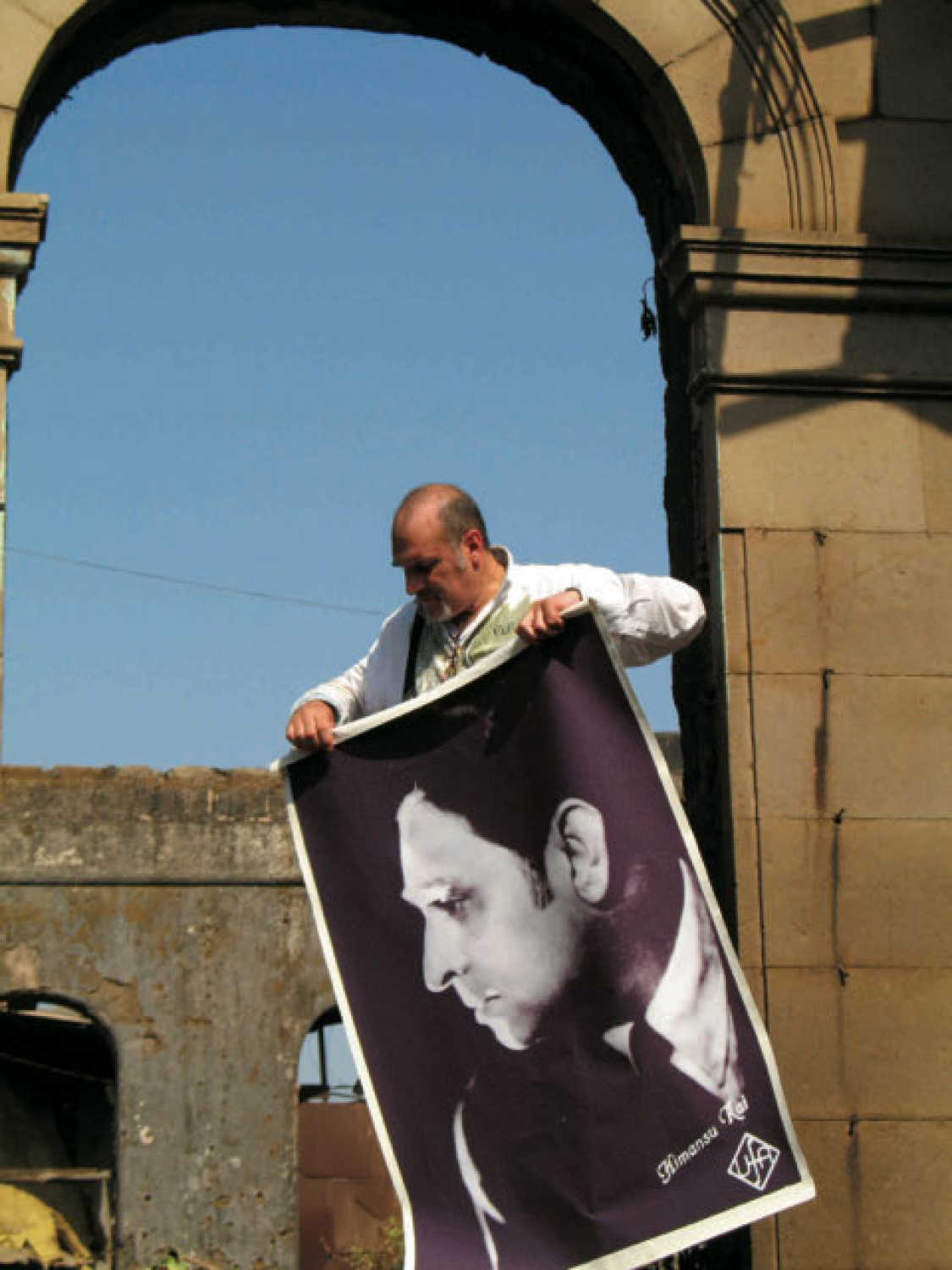Himanshu Rai's grandson speaks about his archive on Bombay Talkies and how he plans to bring it to a wider audience.
Himanshu Rai and Bombay Talkies were freedom fighters in their own way, says grandson Peter Dietze
New Delhi - 16 May 2020 23:26 IST


Sukhpreet Kahlon
The stories about the partnership between Himanshu Rai and Devika Rani are legendary as the two set out to build one of India's pioneering movie studios, Bombay Talkies, back in 1934.
Bombay Talkies, defunct for over six decades now, remains almost mythical in the ways in which it set up a modern, technologically advanced studio that actively sought and fostered talent, introducing some of Indian cinema's biggest stars, including Ashok Kumar, Dilip Kumar and Leela Chitnis. The actor-filmmaker Raj Kapoor did odd jobs at the studio while his long-time collaborator, noted film journalist, writer and filmmaker KA Abbas, began his career with Bombay Talkies.
But few people know that before Himanshu Rai married Devika Rani, he was married to Mary Hainlin, a young German woman who was part of a theatre troupe, The Indian Players. The couple had a daughter too, but Rai married Devika Rani in 1929 and headed back to India to set up his studio in Malad, then a village about an hour's drive from Bombay.
Many decades later, Rai’s grandson, Peter Dietze, found a photograph of Himanshu Rai in his mother’s attic and thought he looked like him. His mother replied, “‘Yes, that’s your grandfather and he’s Indian!”
Remembering that moment, Dietze said, “That’s when Pandora’s box opened up and I have been following his work ever since. Back then, without the internet, I found a book in the library on Himanshu Rai and that was it! It changed my life because until then I did not have any real understanding of my grandparents.”
Speaking on the 80th death anniversary of his pioneering grandfather, Dietze said, “Considering that it is the anniversary of his death, Bombay Talkies brings up a lot of memories of what might have been, what actually happened, the conjecture about it all. There is still a lot of misrepresentation about him in certain articles.” But what remains undeniable is the sheer impact the studio and the vision of its founding team had on the history of Indian cinema.
Dietze came to inherit a stunning archive of memorabilia related to the studio and Rai, which contains 3,000 items that include photographs, letters, screenplays, press clippings, and even invitations. An exhibition of some material from this archive was organized at the Australian Centre for the Moving Image in Melbourne a few years ago.
Discussing the archive and the light it sheds on the atmosphere at Bombay Talkies, Dietze said, “It [the studio] was one of its kind in India with a staff of 400. It has been written many times how they cared for the staff and how they were quite progressive for the time and the films that were produced, even prior to Bombay Talkies... it is a testament to how they ran their business. I have seen some fabulous images about how they would all celebrate after a shoot and there are lots of on-set film stills as well [in the archive].

According to Dietze, “It was Himanshu Rai’s dream to open the studio and he struggled at every turn. It’s apparent through the material in the archive that he was getting knock-backs and how hard it was for him to get the funding. It was quite unbelievable what he was trying to achieve. I think a lot of that came back to those early days.
"In my mind, there was a group of them from Shantiniketan, influenced by Tagore. There was Niranjan Pal, Himanshu Rai and others who were freedom fighters in their own way and charting a course to try and improve conditions in India. That period is a pioneering period for me when I think of what he achieved through his experiences in London, through Mary and The Indian Players. Those early days set a path for the future,” he added.
Dietze is keen on sharing his archive with a wider audience. “My dream is to travel with the exhibition or create various exhibitions for researchers and the general public to embrace Himanshu’s contribution to world cinema and Indian cinema," he said. "There needs to be an exhibition in London, in America, maybe in New York, perhaps at the Carnegie Hall where Himanshu showed The Light Of Asia (1926). All of these things have happened in the past and I would love to see that recognition play out on a large scale and from there make its way to India in a fine museum where it will be on permanent display.
"We did an exhibition in Melbourne with 75 pieces from a collection that contains 3,000 pieces!" he said, giving a sense of how much the archive contains. "There is a lot more for researchers to discover within the archive.”
Dietze has also set up a website through which researchers can connect with him to know more about the archive and collection.



